
The John Dalton Statue: A Tribute to a Visionary
Explore the legacy of John Dalton at his statue in Manchester, a historical landmark celebrating the father of atomic theory and his contributions to science.
The John Dalton Statue in Manchester is a historical landmark dedicated to the influential scientist and chemist John Dalton. A must-visit for history enthusiasts, it celebrates the legacy of one of the city's most important figures in science. Located in a bustling area, the statue serves as a reminder of Dalton's contributions to atomic theory and the world of chemistry, making it a great stop for tourists looking to delve into Manchester's rich intellectual history.
A brief summary to John Dalton Statue
- Manchester, Manchester, GB
Local tips
- Visit during the day to capture photos with natural light.
- Combine your visit with a stroll through nearby parks for a more enjoyable experience.
- Bring a camera to take advantage of the statue's intricate details.
- Check local events as there may be guided tours focusing on historical landmarks nearby.
- Take a moment to read the inscriptions detailing Dalton's contributions to science.
Getting There
-
Walking
If you are starting from Piccadilly Gardens, head north towards the main road in front of you, which is Portland Street. Turn left onto Portland Street and continue walking until you reach the junction with Mosley Street. Turn right onto Mosley Street, and walk straight until you see the intersection with John Dalton Street. Continue straight, and you will find the John Dalton Statue located at the junction of John Dalton Street and Deansgate.
-
Public Transport (Bus)
From St Peter's Square, take bus number 50 towards Cheetham Hill. Get off at the 'Deansgate' stop. From there, walk south along Deansgate, and turn right onto John Dalton Street. The John Dalton Statue will be on your left as you approach the junction.
-
Public Transport (Tram)
From the Manchester Piccadilly tram station, take a tram towards Altrincham or Eccles. Get off at St. Peter’s Square. Walk west towards the main road, which is Deansgate. Turn left onto Deansgate and walk south. Take a right onto John Dalton Street where you will find the John Dalton Statue.
Discover more about John Dalton Statue
Iconic landmarks you can’t miss
John Dalton Statue
0.0 km
Explore the legacy of John Dalton at his statue in Manchester, a historical landmark celebrating the father of atomic theory and his contributions to science.

Hotspur House
0.3 km
Explore Hotspur House, a historical landmark in Manchester that epitomizes the city's architectural beauty and rich cultural heritage.

Friedrich Engels Statue
0.4 km
Explore the Friedrich Engels Statue in Manchester, a captivating tribute to revolutionary thought set against a backdrop of vibrant urban culture.

Historic England
0.4 km
Explore Manchester's historic treasures at Historic England, where heritage preservation meets cultural education.

Canada House, Manchester
0.5 km
Explore Canada House, a captivating historical landmark in Manchester, showcasing the rich cultural ties between Canada and the UK.

Landmark, St Peter's Square
0.6 km
Discover the architectural marvel of Landmark at St Peter's Square, where modern business meets Manchester’s rich historical tapestry.

Manchester Histories
0.7 km
Uncover the vibrant history of Manchester at Manchester Histories, where stories of the past come alive through engaging exhibitions and community events.

Arch of Chinatown
0.7 km
Experience the vibrant culture and heritage at the Arch of Chinatown in Manchester, a stunning gateway to authentic Asian cuisine and unique shopping.

Connaught Building
0.7 km
Explore the historic Connaught Building in Manchester, a stunning architectural gem reflecting the city's rich cultural heritage.
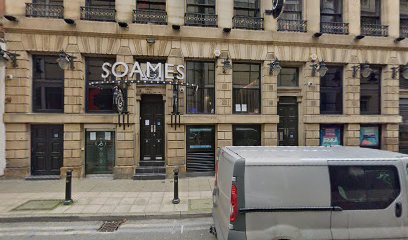
Beetham Tower
0.7 km
Experience the stunning views and modern architecture of Beetham Tower, a must-visit landmark in Manchester's vibrant cityscape.

Manchester Cenotaph
0.8 km
Discover the Manchester Cenotaph, a poignant memorial honoring those who served, set against the vibrant backdrop of the city's rich history.

Free Trade Hall
0.8 km
Explore the Free Trade Hall, an iconic historical landmark in Manchester, rich in culture and architectural beauty, perfect for every tourist's itinerary.

Manchester City Council
0.8 km
Explore the architectural beauty and rich history of Manchester Town Hall, a stunning Victorian landmark in the heart of the city.
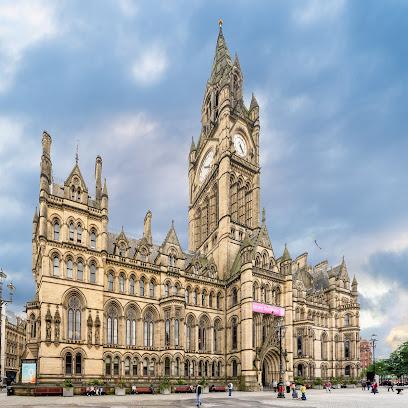
Upper Campfield Market Hall
0.8 km
Explore Upper Campfield Market Hall in Manchester: a historic venue blending culture, food, and community events in a vibrant marketplace.

The Old Quadrangle
0.8 km
Discover the historic elegance of The Old Quadrangle in Manchester, a serene landmark showcasing stunning architecture and rich academic heritage.

Unmissable attractions to see
FAC251 - Factory Manchester
0.3 km
Dive into Manchester's vibrant nightlife at FAC251 - Factory Manchester, a premier nightclub and live music venue that promises unforgettable experiences.
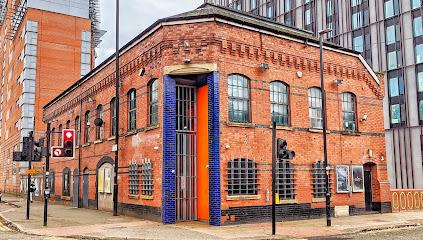
Palace Theatre Manchester
0.4 km
Discover the enchanting Palace Theatre Manchester, a historic venue hosting world-class performances in a stunning architectural setting.

Horse and fox statue
0.4 km
Discover the Horse and Fox Statue in Manchester, a stunning symbol of local folklore and artistic expression that captivates visitors and enriches your travel experience.

HOME Manchester
0.4 km
Discover the artistic heart of Manchester at HOME, featuring performing arts, art exhibitions, and a cinematic experience like no other.

Hacienda
0.5 km
Discover The Hacienda, Manchester's historical nightclub and landmark, where music history and vibrant culture come alive.

Rochdale Canal Lake
0.5 km
Experience the tranquil beauty and rich history of Rochdale Canal Lake in the heart of Manchester, a perfect retreat for nature lovers and history buffs alike.
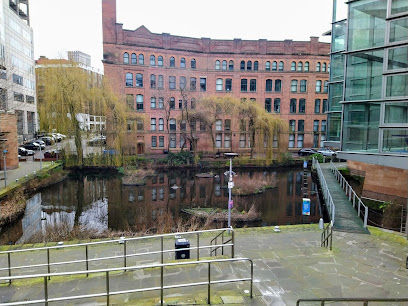
The Rochdale Canal St Tow Path Bridge
0.5 km
Explore the Rochdale Canal Tow Path Bridge, a historic gem in Manchester boasting stunning views, rich heritage, and the charm of the city's waterways.

The New Union
0.5 km
Discover the vibrant pulse of Manchester's LGBTQ+ nightlife at The New Union, a welcoming gay bar and pub with lively entertainment.

The Bridgewater Hall
0.5 km
Discover the iconic Bridgewater Hall in Manchester, a premier concert venue known for its outstanding acoustics and diverse musical performances.

Sightseeing Manchester
0.6 km
Experience Manchester's rich history and vibrant culture with Sightseeing Manchester's immersive bus tours, perfect for every explorer.

Vimto Sculpture
0.6 km
Explore Vimto Sculpture in Manchester, a captivating public art piece surrounded by lush greenery, perfect for art lovers and nature enthusiasts.

The Vimto Park
0.6 km
Explore The Vimto Park, a serene green oasis in Manchester offering relaxation, vibrant landscapes, and cultural experiences for every traveler.

Peterloo Massacre Monument
0.6 km
Explore the Peterloo Massacre Monument in Manchester, a poignant historical landmark dedicated to the fight for democracy and civil rights.

拿破仑(Napoleons) Restaurant and KTV
0.6 km
Discover the ultimate dining and karaoke experience at Napoleons Restaurant and KTV in Manchester, where every meal is a celebration of flavor and fun.

Alan Turing Memorial
0.6 km
Explore the Alan Turing Memorial in Manchester, a stunning tribute to the father of modern computing and a symbol of progress and acceptance in society.

Essential places to dine
The Refuge
0.3 km
Discover the vibrant flavors at The Refuge in Manchester – an eclectic bar and restaurant offering a unique culinary journey.
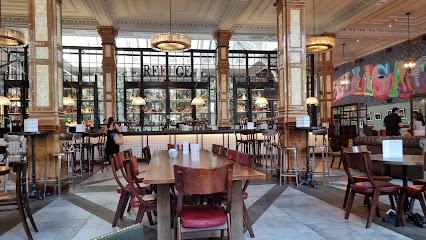
WOOD Manchester by Simon Wood
0.4 km
Experience culinary artistry at WOOD Manchester by Simon Wood, where fine dining meets innovative cuisine in a stunning setting.

Don Giovanni - Italian Restaurant Manchester
0.6 km
Discover authentic Italian flavors at Don Giovanni in Manchester—an inviting spot for delicious meals and vibrant cocktails.

Habesha Restaurant
0.6 km
Discover the rich flavors and vibrant culture of Ethiopia at Habesha Restaurant in Manchester's culinary scene.

Fumo by San Carlo - Manchester
0.6 km
Experience authentic Italian cuisine at Fumo by San Carlo in Manchester, where every dish tells a story of tradition and flavor.

Adam Reid at The French
0.7 km
Experience the pinnacle of fine dining at Adam Reid at The French in Manchester - where culinary artistry meets exquisite flavors.

Mount Street Dining Room & Bar
0.7 km
Discover the essence of modern British dining at Mount Street Dining Room & Bar in Manchester - where culinary creativity meets inviting ambiance.

Podium
0.8 km
Discover modern British cuisine at Podium in Manchester; where fresh ingredients meet contemporary flair in an inviting atmosphere.

James Martin Manchester
0.8 km
Experience exquisite modern British cuisine at James Martin Manchester, where culinary artistry meets vibrant atmosphere.

Dom's Italia
0.8 km
Experience authentic Italian cuisine at Dom's Italia in Manchester – home to delicious wood-fired pizzas and traditional dishes.

Evuna Deansgate
0.8 km
Discover the flavors of Spain at Evuna Deansgate – your go-to destination for authentic tapas and exquisite wines in Manchester.

Another hand
0.8 km
Experience innovative British cuisine at Another Hand in Manchester—where every dish is crafted with creativity and fresh local ingredients.

Dimitri's - Tapas Meze Bar & Restaurant
0.8 km
Experience authentic Greek flavors at Dimitri's - Tapas Meze Bar & Restaurant in Manchester; where Mediterranean delights meet warm hospitality.

Almost Famous GN
0.8 km
Discover Almost Famous GN: A Burger Haven in Manchester Offering Gourmet Flavors and Lively Atmosphere Perfect for Food Lovers.
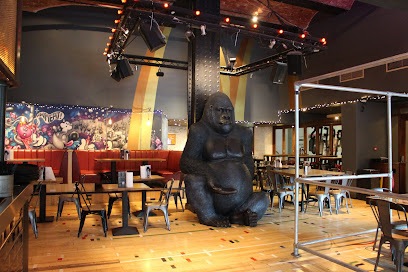
Don Marco
0.8 km
Experience authentic Italian dining at Don Marco in Manchester—where every meal feels like a taste of Italy.
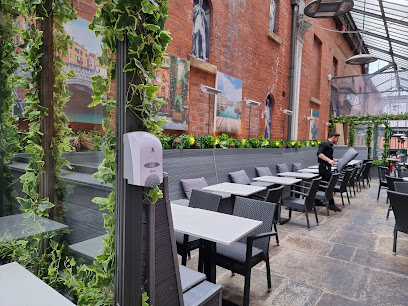
Markets, malls and hidden boutiques
SHMYLS - Thoughtfully Made
0.2 km
Discover unique gifts and handcrafted jewelry at SHMYLS, a thoughtfully made shopping experience in the heart of Manchester.

Utility Gift Store
0.6 km
Explore the Utility Gift Store in Manchester for unique and trendy gifts that capture the essence of your visit.

Cute Things By Aggie
0.6 km
Explore a delightful gift shop in Manchester filled with unique homewares and whimsical treasures for all ages.

Stare Society
0.7 km
Explore the charm of vintage fashion and unique home decor at Stare Society, Manchester's hidden gem for style seekers.

Branded Like A Boss
0.7 km
Explore a vibrant gift shop in Manchester offering unique souvenirs and trendy merchandise, capturing the essence of the city.

Curvilicious Clothing
0.7 km
Discover unique fashion at Curvilicious Clothing in Manchester, a boutique that redefines style with its eclectic and trendy apparel selection.

Deansgate Square General Store
0.7 km
Experience the vibrant local culture at Deansgate Square General Store, Manchester's favorite supermarket for fresh produce and unique finds.

ItsFetch
0.7 km
Unleash your fashion potential at ItsFetch, a stylish accessories shop in Manchester, featuring unique pieces for every trendsetter.

INFINITE RUNNING
0.7 km
Explore Infinite Running in Manchester for stylish running apparel and athleisure wear, perfect for fashion-forward tourists and active travelers.

T.La Art & Craft Gallery
0.7 km
Explore the artistic charm of T.La Art & Craft Gallery in Manchester, where unique gifts and local crafts await every visitor.

The University of Manchester Gift Shop
0.7 km
Discover unique souvenirs and exclusive merchandise at The University of Manchester Gift Shop, a must-visit destination for students and tourists alike.

Catch my Thrift
0.8 km
Explore unique second-hand fashion and sustainable style at Catch my Thrift in Manchester's vibrant fashion scene.

TVSeriesJackets
0.8 km
Explore TVSeriesJackets in Manchester, where iconic TV show jackets come to life, blending style with your favorite characters' adventures.

Great Northern
0.8 km
Experience the vibrant atmosphere of The Great Northern in Manchester, where shopping, dining, and entertainment come together in perfect harmony.
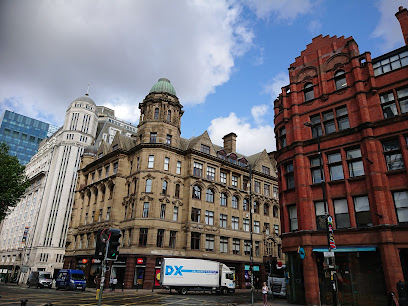
Manchester Souvenirs & Convenience Store
0.9 km
Explore Manchester's charm with unique souvenirs and everyday essentials at the Manchester Souvenirs & Convenience Store.

Essential bars & hidden hideouts
The Britons Protection
0.5 km
Discover The Britons Protection, Manchester's historic gastropub offering a rich selection of ales and delicious dishes in a cozy setting.

Lock 91
0.7 km
Discover the vibrant atmosphere and unique cocktails at Lock 91, a must-visit cocktail bar in the heart of Manchester.

Three Little Words
0.7 km
Experience the vibrant cocktail culture at Three Little Words, Manchester's premier distillery and event venue for unforgettable nights.

Cloud 23
0.8 km
Experience Manchester from new heights at Cloud 23, a luxurious cocktail bar offering spectacular views and expertly crafted drinks.

The Deansgate
0.8 km
Experience the vibrant atmosphere and delicious cuisine at The Deansgate, Manchester's favorite pub and restaurant.

Atlas Bar
0.8 km
Experience the vibrant atmosphere of Atlas Bar in Manchester, where delicious drinks and delightful meals meet friendly service, perfect for every occasion.

Alcotraz Manchester: Cell Block Three-Four
0.8 km
Discover Alcotraz Manchester: Cell Block Three-Four, the immersive cocktail bar where creativity meets a fun prison theme for an unforgettable night out.

cask
0.9 km
Experience Manchester's vibrant pub culture at Cask, where craft beers and a welcoming atmosphere await every visitor.

Slug & Lettuce - Albert Square Manchester
0.9 km
Slug & Lettuce in Albert Square Manchester offers a vibrant cocktail bar and restaurant experience with a diverse menu and creative drinks in a stylish setting.
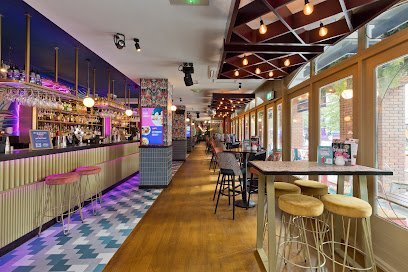
Speak In Code
0.9 km
Experience the vibrant cocktail culture of Manchester at Speak In Code, where every drink is a masterpiece.

The Alchemist New York Street
0.9 km
Discover The Alchemist New York Street, Manchester: A cocktail bar and restaurant that offers a unique fusion of innovative drinks and delectable dishes.

The Blues Kitchen Manchester
1.0 km
Dive into the soul of Manchester at The Blues Kitchen, where live blues, BBQ delights, and cocktails create an unforgettable experience.

Salt Dog Slim's Manchester
1.0 km
Experience Manchester's nightlife at Salt Dog Slim's, a vibrant cocktail bar known for its creative drinks and lively atmosphere.

All Bar One Manchester
1.0 km
Experience the vibrant atmosphere at All Bar One Manchester, a premier wine bar offering an extensive selection of wines, cocktails, and delicious food in the heart of the city.

Bar Eight
1.0 km
Experience the vibrant spirit of Ireland at Bar Eight, Manchester’s top Irish pub featuring great food, drinks, and live sports.




